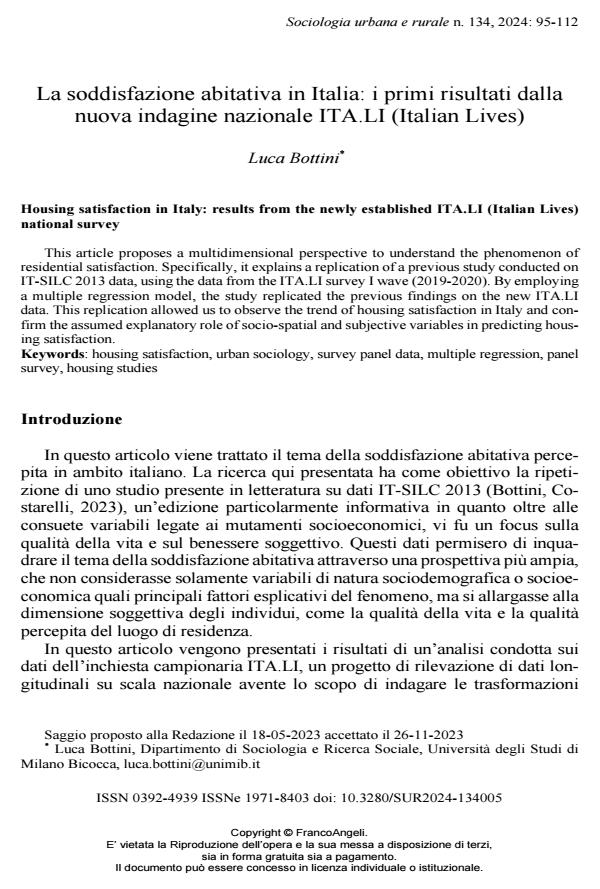Housing satisfaction in Italy: results from the newly established ITA.LI (Italian Lives) national survey
Journal title SOCIOLOGIA URBANA E RURALE
Author/s Luca Bottini
Publishing Year 2024 Issue 2024/134
Language Italian Pages 18 P. 95-112 File size 245 KB
DOI 10.3280/SUR2024-134005
DOI is like a bar code for intellectual property: to have more infomation
click here
Below, you can see the article first page
If you want to buy this article in PDF format, you can do it, following the instructions to buy download credits

FrancoAngeli is member of Publishers International Linking Association, Inc (PILA), a not-for-profit association which run the CrossRef service enabling links to and from online scholarly content.
This article proposes a multidimensional perspective to understand the phenomenon of residential satisfaction. Specifically, it explains a replication of a previous study conducted on IT-SILC 2013 data, using the data from the ITA.LI survey I wave (2019-2020). By employing a multiple regression model, the study replicated the previous findings on the new ITA.LI data. This replication allowed us to observe the trend of housing satisfaction in Italy and confirm the assumed explanatory role of socio-spatial and subjective variables in predicting housing satisfaction.
Keywords: housing satisfaction, urban sociology, survey panel data, multiple regression, panel survey, housing studies
Luca Bottini, La soddisfazione abitativa in Italia: i primi risultati dalla nuova indagine nazionale ITA.LI (Italian Lives) in "SOCIOLOGIA URBANA E RURALE" 134/2024, pp 95-112, DOI: 10.3280/SUR2024-134005